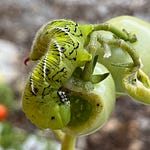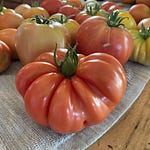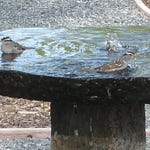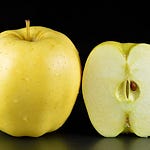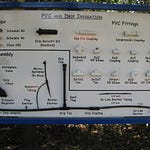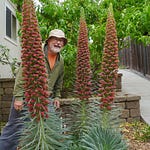In this insightful conversation (above), Farmer Fred speaks with Diane Blazek, executive director of All-America Selections and the National Garden Bureau, about the seasonal transition from summer to fall and how it presents an opportunity for gardeners to refresh their landscapes with vibrant fall colors and cool season blooming plants. Diane's extensive experience in the horticultural industry positions her uniquely to share knowledge on regional and national plant varieties, particularly those achieving popularity across the United States.
Diane highlights the significance of fall planting, emphasizing it as an ideal time for gardeners. With the energy from the summer season still lingering and the ground remaining warm, fall allows for planting before the onset of hard freezes in the colder USDA Zones. This period often fits well within planting guidelines since it enables various plants, especially perennials and bulbs, to establish robust root systems before going dormant. Diane insists that successful fall planting leads not just to immediate gratification but also ensures future blooms and growth come spring. She suggests that novice gardeners pay attention to hardiness zones and engage with local gardening experts to choose suitable plants for their specific climate.
The discussion navigates through practical tips for gardeners, such as understanding the appropriate timelines for planting in areas with cold winters, where the ground may freeze. Diane advises that planting six weeks prior to the ground freezing is optimal for perennials and shrubs, whereas bulbs may have a bit more leeway. The seasoned gardener might experiment with plants that extend beyond their hardiness zone, but careful consideration of a plant's specific requirements is important for beginners seeking reliable results.
Farmer Fred and Diane share insights into the benefits of local nurseries and local cooperative extension offices as critical resources for regionally appropriate plant selections. To further aid gardeners, Diane explains the biological aspects of fall planting—specifically, that initial growth is often underground, with plants focusing on root establishment rather than leaf growth in cooler temperatures. This foundational growth is vital for ensuring a plant's health and successful blooming in future seasons.
They also address winter protection strategies for hardy perennials in colder USDA zones, emphasizing that mulching can be an effective way to insulate plants during freezing periods.

The conversation highlights several flowering plants that are particularly well-suited for fall planting, with Diane showcasing some recent standouts like the ‘Yellow, My Darling’ Echinacea and various cultivars of Buddleja, which bear aesthetic appeal but come with regional considerations due to their invasive potential in certain areas.
Diane also outlines several other standout plants, including hardy hibiscus, highlighted by its vibrant blooms and the exciting new hybrid, ‘Holy Grail,’ which features stunning scarlet flowers.

The distinctive and visually appealing ‘Backdraft’ Kniphofia, reminiscent of Halloween candy corn, adds further enthusiasm to the list of recommended plants.

Ornamental grasses are mentioned for their diverse utility; they add seasonal color, elegance, and even provide habitats for beneficial insects like ladybugs during the winter months.
Diane concludes by reinforcing the importance of fall planting, particularly focusing on perennials, as they set the stage for vibrant gardens come spring. She encourages listeners to explore more about these plants through the National Garden Bureau’s resources for further inspiration and guidance. The synergy between seasonal gardening, plant selection, and ecological benefits forms a compelling narrative aimed at empowering new and experienced gardeners alike to embrace the opportunities that fall planting presents.
Written by Fred, with a little AI help from Auphonic.
==============================================
With your help, we raised over $2,000 for the Sacramento Children’s Home Crisis Nursery during the “Farmer Fred’s Ride for the Kids” on Saturday, Sept. 28. 100-mile bike ride was a success. Mission accomplished!
=============================================================
Thanks for reading Beyond Basics: The Garden Basics with Farmer Fred Newsletter! Subscribe for free to receive new posts and support my work.
Thank you for also listening to the Garden Basics with Farmer Fred podcast! It’s available wherever you get your podcasts. Please share it with your garden friends.
Fred Hoffman is also a University of California Cooperative Extension Master Gardener in Sacramento County. And he likes to ride his bike(s).






